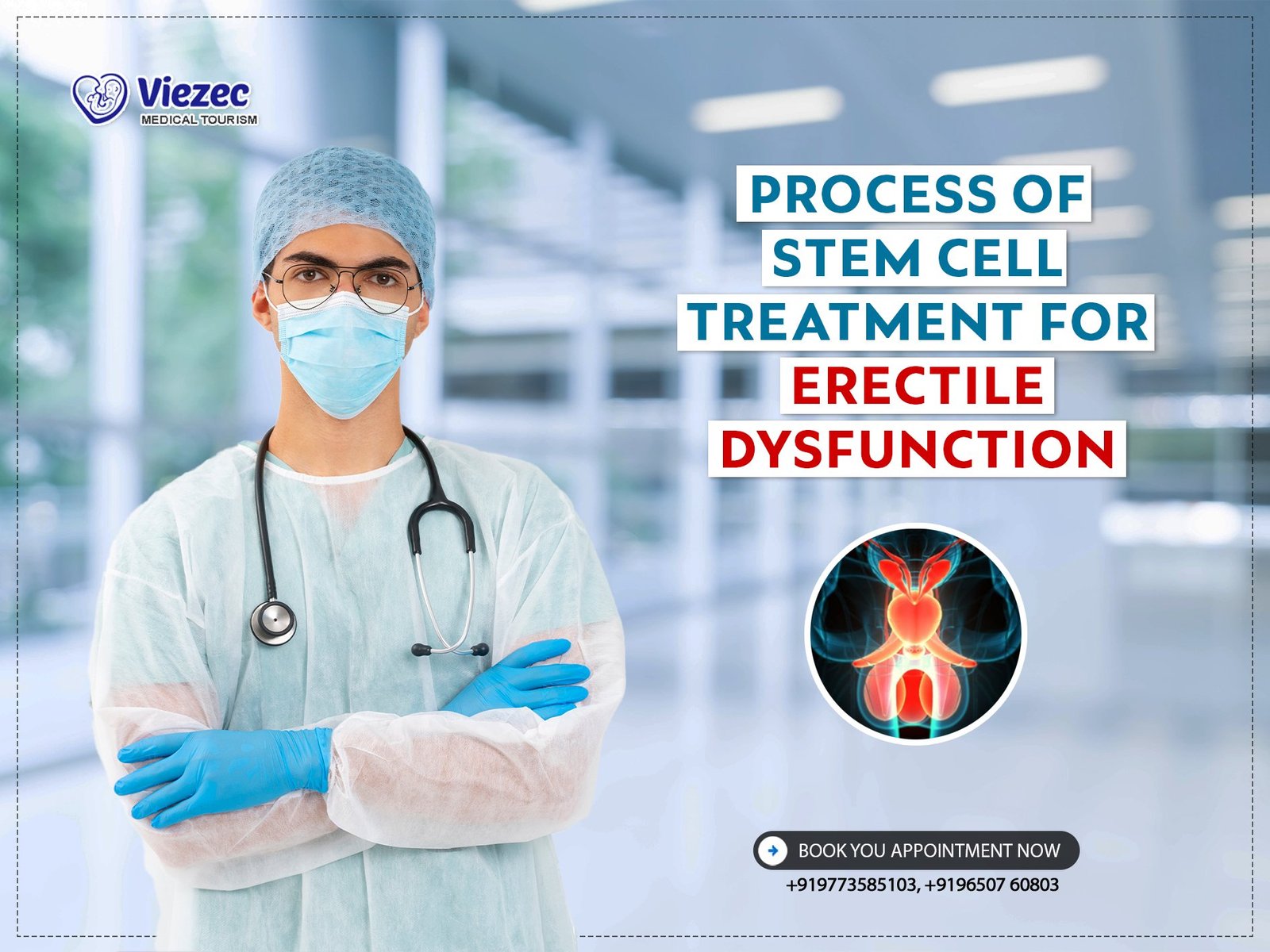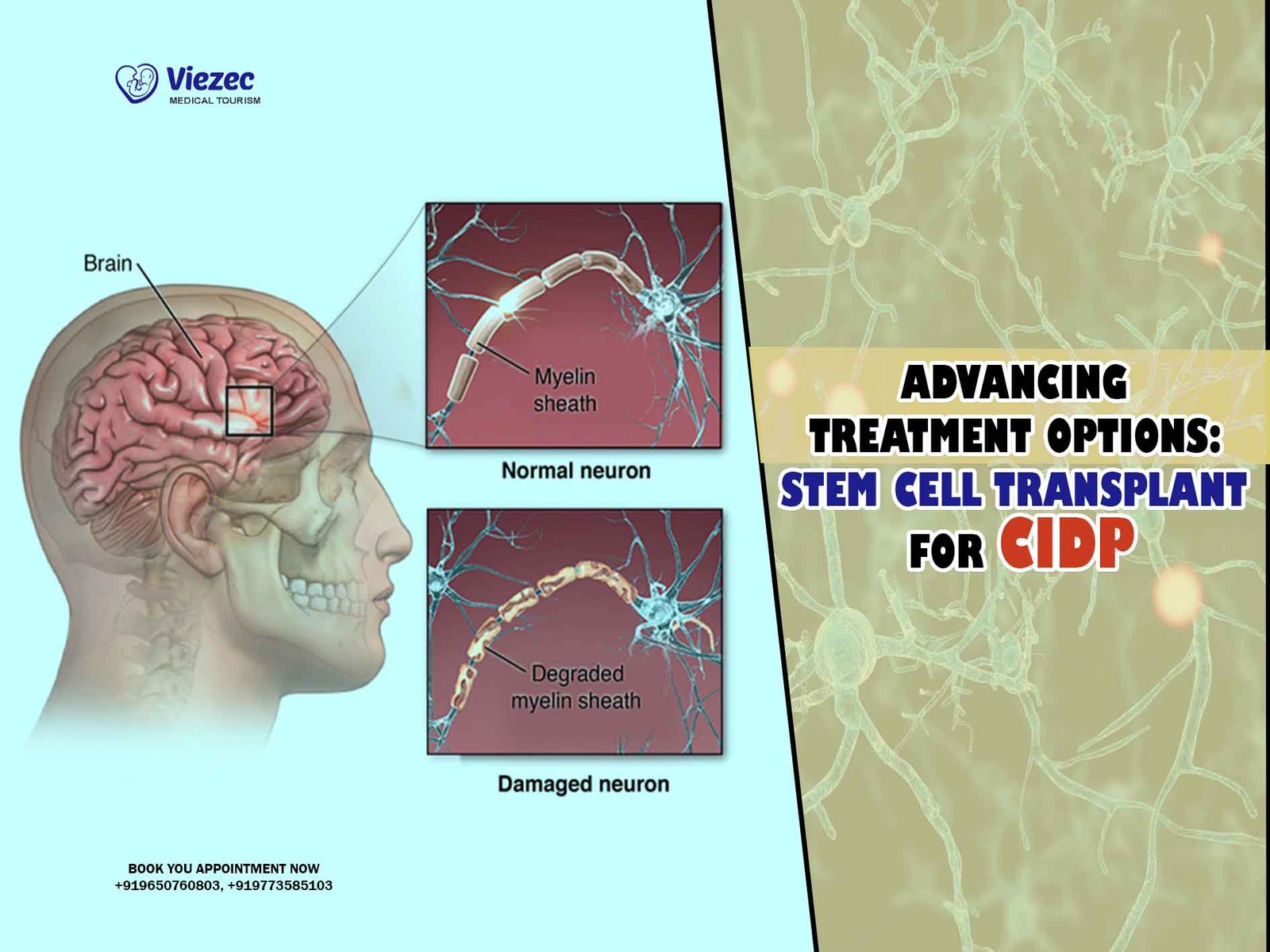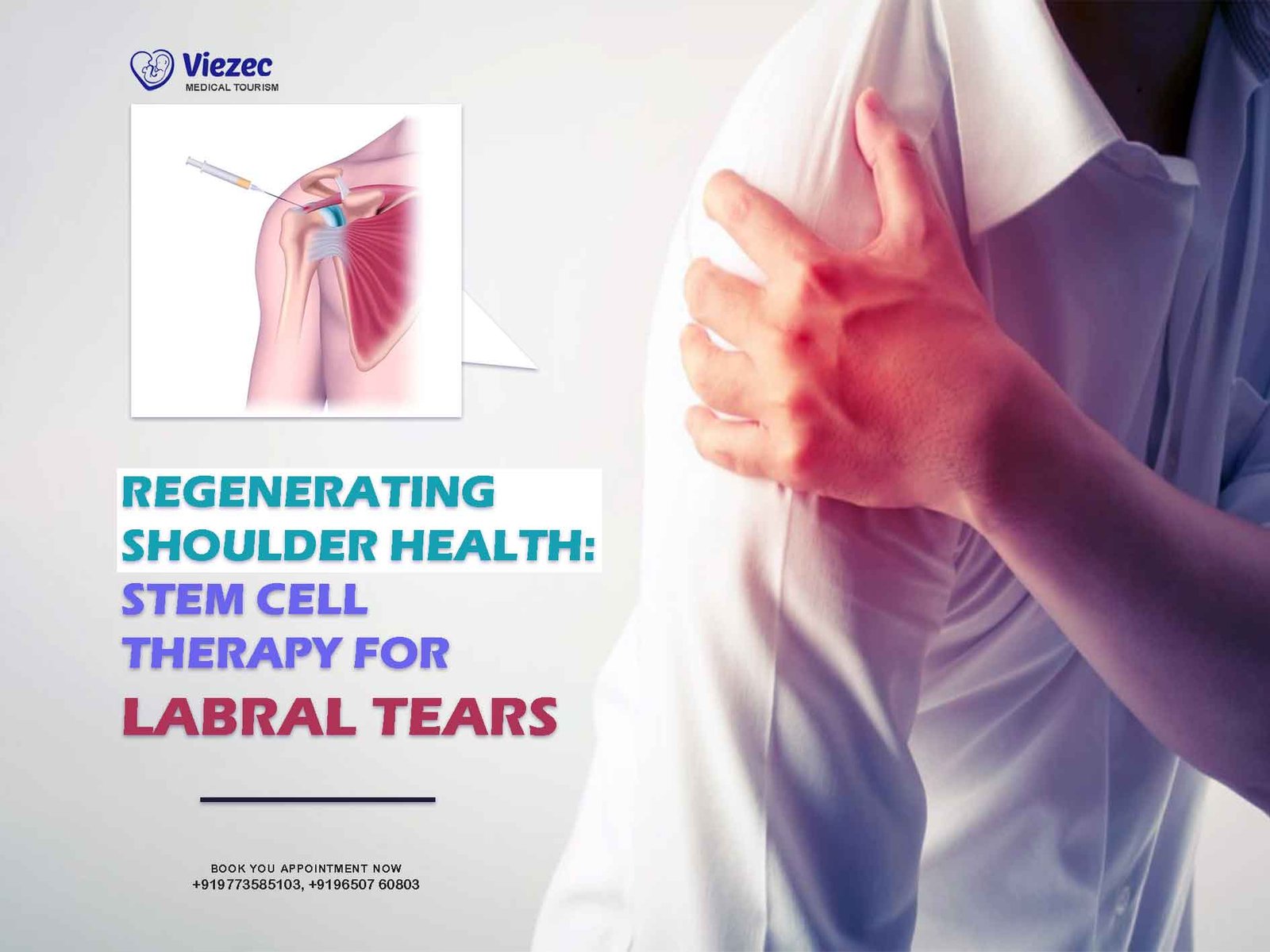Erectile dysfunction (ED) is a common condition that affects a significant number of men, particularly as they age. Despite various treatments available, many find that traditional methods don’t offer a lasting solution. This is where stem cell therapy emerges as a promising alternative. Stem cell treatment for erectile dysfunction has garnered attention due to its potential to regenerate damaged tissues and improve erectile function naturally. Understanding the treatment process is crucial for anyone considering this innovative therapy. This guide delves into the intricacies of stem cell treatment for ED, offering a comprehensive overview that can aid in making informed decisions.
Overview of Erectile Dysfunction (ED)
Erectile dysfunction is characterized by the persistent inability to achieve or maintain an erection sufficient for satisfactory sexual performance. The condition can be caused by a variety of factors, including underlying health conditions, lifestyle choices, and psychological issues. While it is more common in older men, ED can affect men of all ages. The impact of ED extends beyond physical health, often affecting self-esteem, relationships, and overall quality of life. Traditional treatments like oral medications, vacuum devices, and penile implants offer varying degrees of success but often come with limitations and side effects.
Role of Stem Cell Therapy in Treating ED
Stem cell therapy offers a novel approach to treating erectile dysfunction by addressing the root cause of the problem rather than merely managing the symptoms. The treatment involves using stem cells to repair and regenerate damaged tissues within the penile structure, potentially restoring normal function. This approach has gained traction due to its minimally invasive nature and potential for long-lasting results. Unlike conventional treatments that may require continuous use or come with significant side effects, stem cell therapy aims to provide a more permanent solution by rejuvenating the erectile tissue and improving blood flow.
Importance of Understanding the Treatment Process
Before embarking on stem cell therapy for erectile dysfunction, it’s essential to understand the treatment process, including the potential benefits, risks, and what to expect during each stage. This knowledge can help set realistic expectations and improve the overall experience. Understanding the process also empowers patients to ask informed questions and make decisions that align with their health goals. This comprehensive guide will walk you through each step of the treatment process, from the initial consultation to post-treatment care, ensuring you are well-prepared for the journey ahead.
Understanding Erectile Dysfunction
Causes and Risk Factors
Erectile dysfunction can be triggered by a wide range of factors, both physical and psychological. Common physical causes include cardiovascular diseases, diabetes, obesity, hormonal imbalances, and neurological conditions. These conditions can impair blood flow, nerve function, or hormone levels, all of which are crucial for achieving and maintaining an erection. Psychological factors such as stress, anxiety, and depression can also contribute to ED by affecting mental health and sexual desire. Additionally, lifestyle choices like smoking, excessive alcohol consumption, and lack of physical activity can increase the risk of developing ED.
Conventional Treatments and Their Limitations
Traditional treatments for erectile dysfunction typically involve oral medications like sildenafil (Viagra), tadalafil (Cialis), or vardenafil (Levitra), which work by enhancing blood flow to the penis. While effective for many, these medications do not address the underlying causes of ED and may lead to side effects such as headaches, dizziness, and indigestion. Other options include vacuum erection devices, penile injections, and surgical implants, each with its own set of challenges and limitations. These treatments often require ongoing use and may not be suitable for all patients, particularly those with certain medical conditions or those who prefer a more natural approach.
Why Consider Stem Cell Therapy?
Stem cell therapy offers an innovative alternative for those seeking a more natural and potentially permanent solution to erectile dysfunction. Unlike traditional treatments that focus on symptom management, stem cell therapy aims to repair and regenerate damaged tissues, addressing the root cause of ED. This treatment has shown promise in clinical studies, with patients reporting improved erectile function and overall sexual satisfaction. Additionally, stem cell therapy is minimally invasive, with a lower risk of side effects compared to surgical options. For individuals looking for a more holistic approach to treating ED, stem cell therapy may offer the best chance of achieving lasting results.
What Are Stem Cells?
Types of Stem Cells Used in ED Treatment
Stem cells are unique cells with the ability to develop into various types of tissues and organs. In the context of erectile dysfunction treatment, several types of stem cells are commonly used, each with its own advantages and potential applications.
Embryonic Stem Cells
Embryonic stem cells are derived from early-stage embryos and have the ability to differentiate into any cell type in the body. While they offer immense potential for regenerative medicine, their use in ED treatment is limited due to ethical concerns and the risk of immune rejection.
Adult Stem Cells
Adult stem cells, also known as somatic stem cells, are found in various tissues throughout the body, including bone marrow, fat, and blood. These cells are more specialized than embryonic stem cells but are still capable of differentiating into multiple cell types. In ED treatment, adult stem cells, particularly those derived from bone marrow or adipose tissue, are commonly used due to their safety profile and ability to regenerate damaged tissues.
Induced Pluripotent Stem Cells (iPSCs)
Induced pluripotent stem cells are adult cells that have been genetically reprogrammed to behave like embryonic stem cells. This technology allows for the creation of patient-specific stem cells without the ethical issues associated with embryonic stem cells. iPSCs hold promise for ED treatment, although their use is still largely experimental and requires further research to determine their safety and efficacy.
Mechanism of Action in Erectile Dysfunction
The mechanism by which stem cells treat erectile dysfunction involves several processes. Once introduced into the body, stem cells can differentiate into endothelial cells, smooth muscle cells, and other tissues critical for normal erectile function. These newly formed cells can replace damaged tissues, improve blood flow, and enhance the structural integrity of the penile tissue. Additionally, stem cells release growth factors and cytokines that promote angiogenesis (the formation of new blood vessels) and reduce inflammation, further contributing to the restoration of erectile function. This multifaceted approach makes stem cell therapy a promising option for treating the complex condition of ED.
Eligibility and Pre-Treatment Assessment
Who Is a Candidate for Stem Cell Therapy?
Not everyone with erectile dysfunction is an ideal candidate for stem cell therapy. Candidates typically include men who have not responded well to conventional treatments or those seeking a more natural and potentially permanent solution. Ideal candidates are generally in good overall health, with no significant comorbidities that could complicate the procedure. Factors such as age, severity of ED, and underlying health conditions will be considered during the eligibility assessment. Additionally, individuals with specific contraindications, such as certain cancers or infections, may not be suitable for stem cell therapy.
Initial Consultation and Medical Evaluation
The first step in the stem cell treatment process is an initial consultation with a qualified healthcare provider. During this consultation, the physician will review your medical history, discuss your symptoms, and evaluate your suitability for the treatment. This evaluation may include a physical examination, as well as discussions about your expectations and concerns. The goal of this consultation is to ensure that stem cell therapy is the right option for you and to establish a personalized treatment plan that addresses your specific needs and goals.
Diagnostic Tests and Procedures
Before proceeding with stem cell therapy, several diagnostic tests may be required to assess your overall health and pinpoint the underlying causes of your erectile dysfunction. These tests help the medical team develop a targeted treatment plan and ensure the safety and efficacy of the procedure.
Blood Tests
Blood tests are typically conducted to evaluate hormone levels, blood sugar levels, and overall health. These tests can identify conditions like diabetes, low testosterone, or other hormonal imbalances that may contribute to ED. Additionally, blood tests can assess kidney and liver function, ensuring that you are in good health before undergoing treatment.
Imaging Studies
Imaging studies, such as Doppler ultrasound or MRI, may be used to assess blood flow and the structural integrity of the penile tissue. These tests provide valuable information about the severity of ED and help identify any anatomical abnormalities that may need to be addressed during treatment. Imaging studies can also help monitor the effectiveness of the treatment over time.
Preparing for the Treatment
Pre-Treatment Guidelines
Proper preparation is essential for the success of stem cell therapy. Your healthcare provider will provide specific pre-treatment guidelines to follow in the days and weeks leading up to the procedure. These guidelines may include dietary recommendations, activity restrictions, and instructions on medication use. Following these guidelines closely can help optimize the outcome of the treatment and reduce the risk of complications.
Lifestyle Adjustments
Making certain lifestyle adjustments before treatment can enhance the effectiveness of stem cell therapy. This may include adopting a healthier diet, increasing physical activity, and avoiding harmful habits like smoking and excessive alcohol consumption. These changes can improve overall health and create a more favorable environment for stem cell regeneration. Additionally, managing stress and getting adequate sleep can support the body’s natural healing processes and improve the success of the treatment.
Medication Management
If you are taking any medications, your healthcare provider will review them to determine if any adjustments are necessary before the procedure. Certain medications, such as blood thinners or anti-inflammatory drugs, may need to be temporarily discontinued to reduce the risk of bleeding or other complications. Your provider will provide clear instructions on which medications to stop and when to resume them after the treatment.
Psychological Preparation
Psychological preparation is also an important aspect of the pre-treatment process. Erectile dysfunction can take a toll on mental health, leading to feelings of anxiety, depression, or low self-esteem. Addressing these issues through counseling or therapy can help improve the overall treatment experience and contribute to better outcomes. Being mentally prepared and having realistic expectations can enhance your confidence and satisfaction with the results of stem cell therapy.
Stem Cell Harvesting and Processing
Methods of Stem Cell Collection
The first step in the treatment process is the collection of stem cells, which can be obtained from various sources within the body. The two most common methods for stem cell collection in ED treatment are bone marrow aspiration and adipose tissue extraction.
Bone Marrow Aspiration
Bone marrow aspiration involves extracting stem cells from the bone marrow, usually from the hip bone. This procedure is performed under local anesthesia and involves inserting a needle into the bone to collect the marrow. Bone marrow-derived stem cells are known for their high regenerative potential and are commonly used in various medical treatments, including ED therapy.
Adipose Tissue Extraction
Adipose tissue extraction, also known as liposuction, involves harvesting stem cells from fat tissue, typically from the abdomen or thighs. This method is less invasive than bone marrow aspiration and can be performed under local anesthesia. Adipose-derived stem cells are abundant and have shown great promise in regenerative medicine, making them a popular choice for ED treatment.
Processing and Culturing Stem Cells
Once collected, the stem cells undergo processing and culturing in a laboratory to increase their concentration and viability. The cells are isolated, purified, and sometimes expanded to achieve the desired quantity for treatment. This process ensures that the stem cells are of the highest quality and are capable of effectively regenerating damaged tissues. The processing and culturing of stem cells are critical steps in the treatment process, as they directly impact the success of the therapy.
Ensuring Quality and Safety of Stem Cells
Ensuring the quality and safety of stem cells is paramount in stem cell therapy. The cells are rigorously tested for purity, viability, and potential contamination before being used in treatment. This involves strict adherence to quality control protocols and regulatory standards to minimize the risk of complications. The use of high-quality stem cells is essential for achieving optimal results and minimizing the risk of adverse reactions during the treatment.
Stem Cell Treatment Procedure
Intracavernous Injection
The most common method of administering stem cells for erectile dysfunction is through intracavernous injection. This involves injecting the stem cells directly into the penile tissue, where they can target damaged areas and promote regeneration. The procedure is typically performed under local anesthesia to minimize discomfort. Intracavernous injection allows for precise delivery of stem cells to the affected areas, maximizing their therapeutic potential.
Intravenous Infusion
In some cases, stem cells may be administered through intravenous infusion, where the cells are delivered into the bloodstream. This method allows the stem cells to circulate throughout the body and reach multiple tissues, including the penile tissue. Intravenous infusion is less invasive than intracavernous injection but may require a higher number of stem cells to achieve the desired effect. The choice of administration method will depend on the patient’s specific needs and the physician’s recommendation.
Combination of Treatment Methods
In certain situations, a combination of intracavernous injection and intravenous infusion may be used to enhance the effectiveness of the treatment. This approach allows for both targeted and systemic delivery of stem cells, potentially leading to better outcomes. Combining treatment methods may be recommended for patients with more severe or complex cases of erectile dysfunction.
Pain Management and Anesthesia Options
Pain management is an important consideration during the stem cell treatment procedure. Local anesthesia is commonly used to numb the treatment area and minimize discomfort during the injections. In some cases, sedation may be offered to help the patient relax and reduce anxiety. Your healthcare provider will discuss the available pain management options and help you choose the best approach based on your comfort level and medical history.
Post-Treatment Care and Monitoring
Immediate Post-Procedure Care
After the stem cell treatment, you will receive specific instructions for post-procedure care to ensure a smooth recovery. This may include guidelines on activity restrictions, wound care, and medication use. It’s important to follow these instructions closely to avoid complications and optimize the healing process. You may experience some mild discomfort or swelling at the injection site, which typically resolves within a few days.
Monitoring for Adverse Reactions
Your healthcare provider will monitor you closely for any adverse reactions or complications following the procedure. This may involve regular follow-up appointments and periodic assessments of your progress. While stem cell therapy is generally safe, it’s important to be aware of potential side effects and report any unusual symptoms to your provider immediately. Monitoring ensures that any issues are addressed promptly and that the treatment is proceeding as expected.
Follow-Up Appointments
Regular follow-up appointments are a critical component of the post-treatment process. During these appointments, your provider will assess your progress, evaluate the effectiveness of the treatment, and make any necessary adjustments to your care plan. Follow-up visits also provide an opportunity to address any concerns or questions you may have about the treatment. Consistent follow-up care is essential for achieving the best possible outcomes from stem cell therapy.
Lifestyle and Dietary Recommendations
Maintaining a healthy lifestyle and following dietary recommendations can support the success of stem cell therapy. Your provider may suggest specific dietary changes, such as increasing your intake of fruits, vegetables, and lean proteins, while reducing processed foods and sugars. Regular exercise, stress management, and adequate sleep are also important for supporting overall health and enhancing the effectiveness of the treatment. These lifestyle modifications can help sustain the benefits of stem cell therapy and improve your quality of life.
Expected Outcomes and Recovery Timeline
Short-Term vs. Long-Term Results
The results of stem cell therapy for erectile dysfunction can vary depending on several factors, including the severity of the condition, the patient’s overall health, and the type of stem cells used. Some patients may begin to notice improvements in erectile function within a few weeks of treatment, while others may take several months to experience significant changes. Short-term results often include increased blood flow and improved tissue regeneration, while long-term results may involve sustained improvements in erectile function and overall sexual satisfaction.
Factors Influencing Success Rates
Several factors can influence the success rates of stem cell therapy for erectile dysfunction. These include the patient’s age, the duration and severity of ED, the presence of underlying health conditions, and adherence to post-treatment care guidelines. Patients who are younger, in good overall health, and have a less severe form of ED may experience higher success rates. Additionally, following the recommended lifestyle and dietary changes can enhance the effectiveness of the treatment and contribute to better outcomes.
Recovery Phases and Milestones
The recovery process after stem cell therapy for erectile dysfunction typically involves several phases, each with its own set of milestones. In the initial phase, patients may experience some discomfort and swelling at the injection site, which usually subsides within a few days. As the stem cells begin to take effect, patients may notice gradual improvements in erectile function and sexual performance. The final phase of recovery involves long-term maintenance of the treatment results, with periodic follow-up appointments to monitor progress and address any concerns. Reaching these milestones is an important part of the overall treatment process and contributes to long-term success.
Potential Risks and Side Effects
Common Side Effects
While stem cell therapy is generally considered safe, there are some common side effects that patients may experience. These include mild pain or discomfort at the injection site, temporary swelling or bruising, and minor bleeding. These side effects are typically short-lived and resolve on their own without the need for additional treatment. Your healthcare provider will provide guidance on how to manage these symptoms and ensure a smooth recovery.
Rare but Serious Complications
Although rare, there are some serious complications that can occur with stem cell therapy. These may include infection at the injection site, allergic reactions, or the development of abnormal tissue growth. It’s important to choose a qualified and experienced provider to minimize the risk of these complications. If any unusual symptoms or concerns arise after the procedure, it’s crucial to seek medical attention immediately to address the issue promptly.
Long-Term Safety Considerations
Long-term safety is an important consideration for anyone undergoing stem cell therapy for erectile dysfunction. While the therapy has shown promising results, it’s still a relatively new treatment, and long-term data on its safety and efficacy are limited. Ongoing research and clinical trials are needed to fully understand the long-term implications of stem cell therapy. Patients should be aware of these considerations and discuss any concerns with their healthcare provider before proceeding with treatment.
Patient Testimonials and Success Stories
Real-Life Experiences
Hearing from other patients who have undergone stem cell therapy for erectile dysfunction can provide valuable insights into what to expect from the treatment. Many patients report significant improvements in erectile function and overall sexual satisfaction following the procedure. These real-life experiences can offer reassurance and help set realistic expectations for the treatment.
Case Studies
Case studies provide a detailed look at individual patient experiences with stem cell therapy for erectile dysfunction. These studies often highlight the patient’s background, the specifics of the treatment, and the outcomes achieved. Reviewing case studies can give you a better understanding of how the treatment works in different scenarios and what results you might expect based on your unique situation.
Success Rates and Patient Satisfaction
Overall, patient satisfaction with stem cell therapy for erectile dysfunction tends to be high, with many reporting improved erectile function and enhanced quality of life. Success rates vary depending on factors such as age, health status, and the severity of ED, but many patients achieve positive outcomes with this treatment. Understanding the success rates and patient satisfaction levels can help you make an informed decision about whether stem cell therapy is right for you.
FAQs
How Effective Is Stem Cell Therapy for ED?
Stem cell therapy has shown promise in treating erectile dysfunction, particularly in cases where traditional treatments have been ineffective. While results can vary, many patients experience significant improvements in erectile function and overall sexual satisfaction after undergoing stem cell therapy.
What Are the Costs Involved?
The cost of stem cell therapy for erectile dysfunction can vary depending on factors such as the provider, the type of stem cells used, and the specific treatment plan. It’s important to discuss the costs upfront with your healthcare provider and explore any available financing options to make the treatment more affordable.
Can Stem Cell Therapy Be Combined with Other Treatments?
Yes, stem cell therapy can often be combined with other treatments for erectile dysfunction, such as oral medications or lifestyle changes. Combining therapies may enhance the overall effectiveness of the treatment and lead to better results. Your healthcare provider can help you determine the best approach based on your individual needs.
How Do I Choose the Right Treatment Center?
Choosing the right treatment center is crucial for achieving the best possible outcomes from stem cell therapy. Look for a center with experienced healthcare providers, a proven track record of success, and a commitment to patient safety and satisfaction. Reading reviews and testimonials from other patients can also help guide your decision.
What Should I Expect During the Recovery Process?
The recovery process after stem cell therapy for erectile dysfunction is generally straightforward, with most patients experiencing minimal discomfort. Following your provider’s post-treatment care instructions and attending follow-up appointments are key to ensuring a smooth recovery and optimal results.









